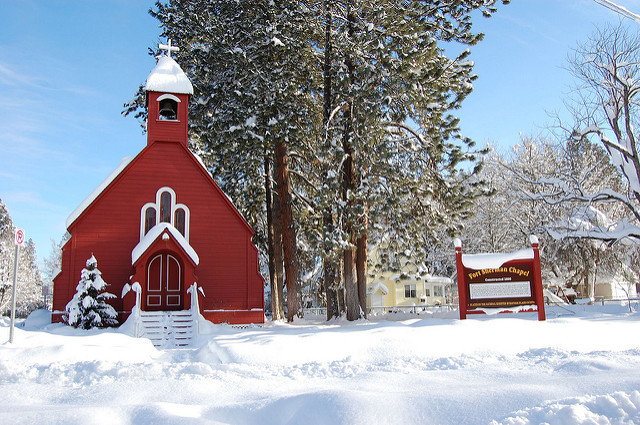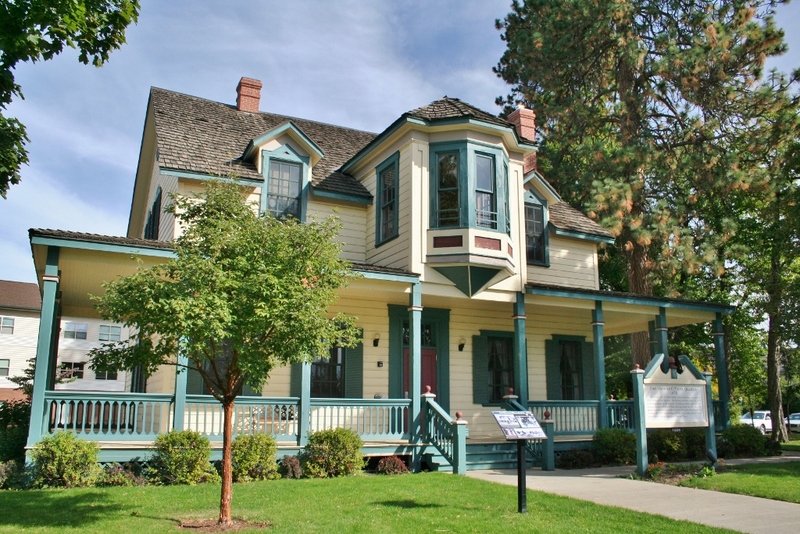Fort Sherman on Lake Coeur d'Alene

Thought of as a resort destination today, the town of Coeur d’Alene got its start with the building of Fort Sherman. While often told as a peaceful story, the building of the fort illustrated the military presence that helped ensure the forced removal of Native people and the control of labor unions.
In 1877, United States General William Tecumseh Sherman went on an inspection tour throughout the west. One of his stops brought him to the banks of Lake Coeur d’Alene in northern Idaho. General Sherman fell in love with the scenery in the area and was impressed enough to suggest building a military fort there. Within a year, a military post was established following Sherman’s advice, originally taking the name of Camp Coeur d’Alene. The name was changed to Fort Coeur d’Alene in 1879, and eventually to Fort Sherman in 1887 to honor General Sherman as he retired from military duty.
While stationed at Fort Sherman, US soldiers had three major duties. They were asked to help keep the peace in northern Idaho between those settling in the area and the Native people who were attempting to retain their lands and resources. Other duties included protecting the railroad and telegraph lines, as well as protecting the Canadian border from any conflict with the province of British Columbia. Overall, the troops stationed here generally didn’t encounter much need for military interference. They were only sent out from the fort twice keep peace within northern Idaho. First, they dispatched in 1878 to fight against Bannocks in the Bannock Indian War, taking place in southern Idaho. Second, they were called to the Coeur d’Alene miner strike of 1892. The miners were fighting against the reduction of wages and increase of hours, and spurred on by the discovery union information was being passed to mine owners. The military from Fort Sherman came to aid civil authorities against the miners and prevent insurrection and violence. Both times, the troops were gone for around a month, returning back after very little conflict.
As Fort Sherman grew, the community surrounding it did as well. A hospital, school, chapel, and library were built on the fort, making it more comfortable for the soldiers and their families. Yet this expansion of the settler community threatened the land of Coeur d’Alene Indians. The tribe started to be forcibly removed prior to the building of the fort in 1873, but were officially moved in 1885 to a reservation forty miles away, on the southern tip of the lake.
Fort Sherman was officially declared abandoned in March, 1900, and the buildings and property were sold at a public auction in 1905. Today, only two of the original buildings remain, the chapel and the one of the officer’s quarters. The Fort Sherman Chapel now stands as Coeur d’Alene’s oldest church and school and is also listed on the National Register of Historical Places in order to ensure its preservation. The rest of the land bought from Fort Sherman was used to build the North Idaho College campus, instead of returning it back to the Coeur d’Alene tribe. Today, the campus is full of memorials, commemorating the settlers that removed Native people from their homes.
Images


